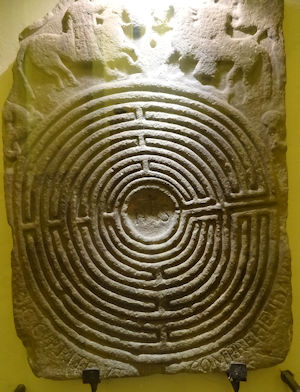Search the World Map:
Or
Search by one or more criteria; the more terms you add, the narrower the search.
















This carved stone slab is now displayed on the wall of the modern church of San Pietro, close to its original location in the now destroyed church of San Pietro of Conflentu.
Medieval
11 circuit medieval type with additional inscriptions.
Public
Indoor
Permanent
Stone carving
No
The church is often locked, but it's worth asking at the adjacent shop for the whereabouts of the caretaker.
Slab measures 81 x 55 cm.
c. 12th century CE
© 2004-2024 The Labyrinth Society & Veriditas. All Rights Reserved.
Lorem ipsum dolor sit amet, consectetur adipiscing elit. Ut elit tellus, luctus nec ullamcorper mattis, pulvinar dapibus leo.